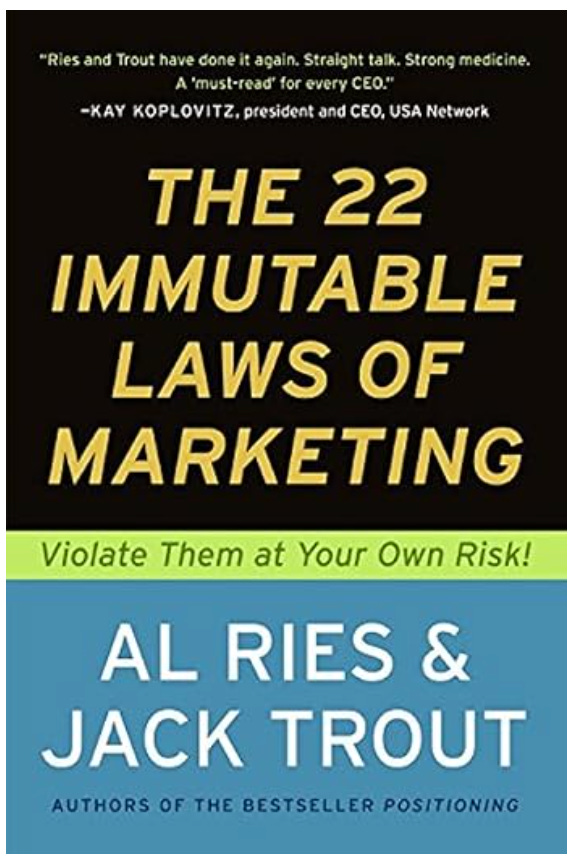
Laws of Marketing - traditional to modern
 This book was published in 1994 and still holds marketing gems relevant for today. Here is my take on five of the ‘Laws’ detailed in the book, and how they continue to be immutable 30 years later in the age of digital & social media marketing, social media influencers and customer behaviour driven marketing strategies.
This book was published in 1994 and still holds marketing gems relevant for today. Here is my take on five of the ‘Laws’ detailed in the book, and how they continue to be immutable 30 years later in the age of digital & social media marketing, social media influencers and customer behaviour driven marketing strategies.
Did you know Altair 8800 Microcomputer was the first popular personal computer to have sold in 1000s. Within a month of their launch in 1974, it had a backlog of 4000 orders. Unfortunately this company and the PC now remains a part of the Museum artefact alone. What is it that IBM did better, even if they started late by launching PCs only in 1981. They got their marketing and business strategies right than most of their other competitors of the era. The very transformation of the brand from only a hardware focussed one to the one obsessed over customer needs to provide a complete end-to-end solution from products, service to consulting. This is what the author calls the ‘Law of the Mind’.
“It is better to be first in the mind than first in the marketplace.”
The book talks about examples of the same Automotive manufacturer selling cars in different countries but being perceived differently. Toyota, Honda and Nissan the top 3 brands in Japan (continue to remain at the top in 2024). Honda at that point in time was more successful in US than in Japan, mainly as it was perceived as a 2-wheeler brand in Japan, though there were no qualitative differences in the cars sold by them in both these countries. Interesting to note is the fact that Honda had a different perception in UK and in general in Europe resulting in lesser sales than its counterpart Toyota for instance. Honda was thought as ‘boring and uninspiring’ leading to the thought of ‘poor quality’. The marketing campaign “The Cog” to launch the 7th generation Honda Accord in 2003 did the magic for them. To recall a few outcomes, their website traffic quadrupled in the days following the airing of the commercial and resulted in an increase in sales by 28%. Clearly the ‘Law of Perception: Marketing is not a battle of products, it's a battle of perceptions." at work. More often than not it is the well perceived product that wins over the one that is indeed the best.
“A perception that exists in the mind is often interpreted as a universal truth.”
‘Law of Focus’ as mentioned in the book is about ‘The most powerful concept in marketing is owning a word in the prospect's mind.’
“You 'burn' your way into the mind by narrowing the focus to a single word or concept. It’s the ultimate marketing sacrifice."
Going by a few examples quoted are what Xerox did to copiers in general, there are many parts of the world that still call a photocopy a ‘Xerox’. So is ‘Pampers’ to diapers. Well how many of us say ‘Google’ it instead of ‘search it online’. That is what the owning of the word in prospect’s mind does to your brand. Google continues to retain 81% of the global market share in 2024, while other search engines are coming up to speed. Kia Motors focussed on ‘Power to surprise’ for their launch in India in 2019. They launched with a “Magical Inspiration | Stunning Design” that became the most viewed ad in 2019 with the YouTube views alone at 236 million. Kia sold 96,932 SUVs in 2019 and was a close 2nd to Hyundai Creta selling 96,989 units. The marketing had a big role to play in cracking the Indian market along with product offerings, pricing and positioning. Kia ventured into the specific mid-sized and sub-compact SUV segments. Which if looked at closely goes into the likes of “Law of Category - A category will divide and become 2 or more categories”
The “Law of Perspective” talks about the perils of giving in to the greed over short-term gains while overlooking the long-term pitfalls. The book gives the example of discounted pricing leading to spike in sales, but customers getting habituated to the lowered pricing and the business not being able to make profits due to this. One of the recent examples is that of MoviePass founded in 2011 that offered unlimited movies to be watched in a month for a subscription between $20 to $50. They gained more than 3 million users in a year. Most users watched movies frequently with many watching more than 12 movies in a month. This left MoviePass bleeding as it was purchasing the tickets at list price. No wonder it went downhill and through a bankruptcy auction too. But the good news is that they revived by replacing their strategy with tiered subscription and additional levels to usage based on recency of movie, prime slots etc. For the first time in 2023, MoviePass was profitable.
The one thing that I don’t agree with is that:
“Most marketing mistakes stem from the assumption that you’re fighting a product battle rooted in reality.”
The 22 Immutable Laws of Marketing
This goes on to say that marketing could sell the worst of products, perhaps it does work for the short term. But in a well connected world like today when an incident of a “passenger who is served cold coffee instead of hot, and denied a replacement on an airplane” could be tagged to its CEO on social media with video evidence, Customer experience and honest products & services win over the rest. A sub-par product or service cannot stand its ground for long. Marketing does give it that much needed push for people to know what it has to offer, to tell the story of the product, to set the right pretext…once sold your customer referral is your best marketing tool.
More laws coming soon….

